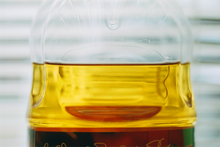Production:
– Apples for apple juice harvested between September and mid-November in the Northern Hemisphere and February to mid-April in the Southern Hemisphere.
– Common cultivar for apple juice is the McIntosh.
– Two medium McIntosh apples yield about 200 millilitres of juice.
– Apples washed, transported to processing facility, pressed, and juiced promptly.
– Apples processed differently based on company and end-product before pressing.
Pasteurization:
– Apple juice, with pH of 3.4, pasteurized for shorter time or at lower temperatures due to acidity.
– U.S. FDA recommends thermal processing times and temperatures for pathogen reduction.
– Thermal processing times range from 6 seconds at 160°F to 0.3 seconds at 180°F.
– Pasteurization crucial to eliminate harmful parasites, bacteria, and viruses.
– Proper pasteurization ensures apple juice safety for consumption.
Unpasteurized juice and foodborne illnesses:
– Over 1700 cases of illnesses in North America from 2000 to 2010 linked to drinking unpasteurized juice.
– Pathogens causing food-borne illnesses include E. coli, Salmonella, Cryptosporidium, Clostridium botulinum, and hepatitis A.
– Pathogens spread through various contamination sources like fruit growth areas and poor handling.
– Proper pasteurization and handling practices crucial to prevent foodborne illnesses.
– Unpasteurized juice poses higher risks of contamination and foodborne illnesses.
Composition and nutrition:
– Apple juice comprises 88% water and 11% carbohydrates (9% sugars), with minimal protein or fat content.
– 100 ml unsweetened apple juice provides 46 calories and lacks significant micronutrient content.
– Apple juice offers hydration and energy from natural sugars.
– Low protein and fat content make apple juice a low-calorie beverage option.
– Nutrient-rich whole fruits are a healthier alternative to processed apple juice.
Storage:
– Fresh apple juice requires refrigeration to maintain freshness.
– Sealed canned apple juice can be stored in a cool, dark place like a pantry to prolong shelf life.
– Changes in appearance, texture, or taste may occur over time in stored apple juice.
– Opened juice packages must be tightly resealed and refrigerated to prevent bacterial contamination.
– Ideal storage temperature for apple juice ranges from 0°C to 4°C to preserve quality.
Apple juice is a fruit juice made by the maceration and pressing of an apple. The resulting expelled juice may be further treated by enzymatic and centrifugal clarification to remove the starch and pectin, which holds fine particulate in suspension, and then pasteurized for packaging in glass, metal, or aseptic processing system containers, or further treated by dehydration processes to a concentrate.



Due to the complex and costly equipment required to extract and clarify juice from apples in large volume, apple juice is normally produced commercially. In the United States, unfiltered fresh apple juice is made by smaller operations in areas of high apple production, in the form of unclarified apple cider. Apple juice is one of the most common fruit juices globally, with world production led by China, Poland, the United States, and Germany.
